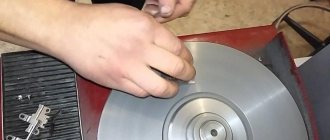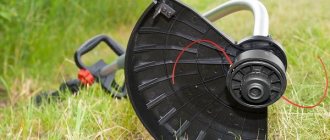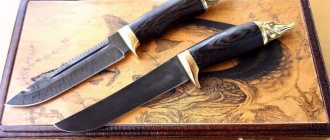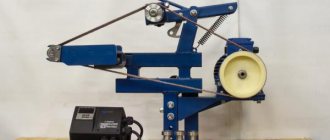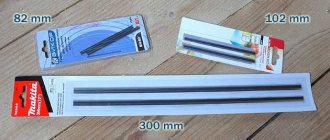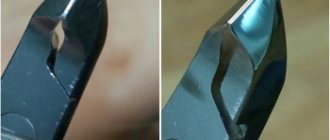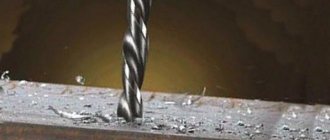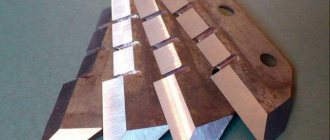Hairdressing tools lose their sharpness over time and require repair. Before sharpening the clipper blades, they must be removed and prepared. Cleaning and lubrication are very important in this process. Special workshops guarantee high-quality sharpening, but there are few of them and they are not always located nearby. In this case, you can sharpen the cutting edges yourself.
Hair clipper (Photo: pixabay.com)
When is sharpening necessary?
Manufacturers may recommend sharpening frequency based on average data. This is influenced by several factors:
- tool use activity;
- hair stiffness;
- cleanliness of the head.
It is easier for a master to work with wet hair. The machine becomes clogged with dust from moisture and the metal parts become corroded.
The first sign of decreased blade sharpness is a deterioration in the hair cutting process. The hairdresser has to go over one area 2-3 times. The engine begins to hum louder. The client complains that the machine is pulling his hair.
On a professional machine
This option is more suitable for hairdressers whose working tools require regular – at least 4 times a year – and high-precision sharpening. At the same time, the high quality of this process can only be ensured by a special machine, which significantly reduces the time for this procedure.
The algorithm of actions in this case looks like this:
- remove the knives from the trimmer;
- cover the sanding disc, cleaned of dust and dirt, with an even layer of abrasive paste;
- fix the knife on the magnetic holder with the cutting edge down;
- we start the machine at a certain speed (indicated in the instructions);
- We bring the knife to the wheel and begin the sharpening process, using smooth movements of the blade, the teeth of which should be directed against the movement of the grinding disc, from the edge to the central part.
The main disadvantage of this method is the high cost of a professional machine and consumables.
Methods
You can sharpen your hair clipper yourself in different ways. On models with self-sharpening blades, it is enough to clean all surfaces of dirt and hair, and the operation of the machine will improve.
Professional kit
A professional kit is an electrical mechanism hidden under the body. On top there is an aluminum circle, the size of which corresponds to the length of the cutting edge. In addition to the equipment, you must have:
- cleaning gel;
- abrasive powder;
- disc oil;
- magnetic holder.
The hair clipper is disassembled, the knives are removed and cleaned. Then they begin to prepare the machine:
- Clean the surface of the disc from dust and abrasive residues.
- Lubricate the surface of the aluminum circle with oil.
- Apply special abrasive powder evenly to the disc.
- Secure the blade in the magnetic holder.
- Turn on the machine.
- Slowly bring the blade towards the circle and press it against the rotating surface.
- Move the part to be sharpened from the edges of the disk to the middle.
- After 90–120 seconds, raise the blade. Turn off the machine.
The surface of the part being sharpened should acquire a steel shine. This means that the dark oxidized layer has been removed. If dull and gray spots remain, the operation must be repeated. The second blade is processed similarly.
On a grinding machine
A knife is attached to the magnetic table. It is set strictly in a horizontal plane with the surface being processed upward. Turning:
- A polishing wheel is installed on the shaft. When stationary, it is brought to the surface of the part with a gap of 0.5–1 mm. Moved to the side.
- The machine turns on.
- The circle is slowly lowered until it touches the surface of the blade.
- The touch marks are used to check the correct installation of the part to be sharpened. The situation is being corrected.
- Several passes are made with the circle fed downwards.
- Sharpening is completed with several passes of the wheel without vertical feed.
Sharpening the clipper knives is done one at a time. The dimensions of the magnetic table allow you to install several knives, but they have different shapes and sizes. It is impossible to place them in the same plane.
On a lathe
Preparing the lathe begins with rearranging the chuck jaws. They should be installed in the opposite direction in order to clamp the disk - an abrasive wheel - instead of the part. Treatment:
- Turn on the machine and check the end for runout. Set the spindle rotation to 1000–1200 revolutions.
- Bring the knife fixed in the magnetic holder to the edge of the circle.
- Move the sharpened part to the center and back.
- Check the sharpness of the blade.
The disadvantage of sharpening on a lathe is the increased danger of the work. Your hand may get caught in the chuck or be damaged by the jaws.
Block and sandpaper
The method of sharpening hair clipper knives on a sharpening stone with sandpaper does not require the use of additional equipment and is suitable for sharpening the cutting edge of a hairdresser's working tool.
Fine-grit sandpaper is secured to a wooden block. It should be well stretched along the upper plane. The knife is moved along the surface, along the block, until a shiny polished surface is formed.
The sharpening quality is worse than on a professional machine. The costs of preparation and equipment are minimal. Necessary items are always at hand.
Knife sharpening stone
The blades that work in a hair clipper are sharpened on a whetstone that is used to straighten the blades of kitchen tools. The process is similar to restoring a cutting edge with sandpaper. Bar requirement:
- fine grain;
- the thickness is greater than the blade size.
For home restoration of parts, you should take a wide block. The knife should lie completely on its surface.
On an emery machine
A platform is placed under the sandpaper belt rotating on rollers. It serves as a support for paper and the knife being sharpened.
The blade is secured in the holder and pressed against the sandpaper. The direction of the teeth is against the movement of the abrasive belt.
The operation lasts about a minute. The quality of sharpening is inferior to machine-made.
Using a grinder
This method requires increased caution, as well as the presence of stationary or manual grinding equipment:
- We press the removed and cleaned knives with the cutting part to the grinding wheel;
- turn on the machine;
- sharpen the blades to a mirror shine;
- clean the knives (it is better to rinse) from abrasive materials;
- We assemble the cutting unit and install it on the machine.
Disadvantages: labor-intensive process, expensive equipment and not the highest quality.
Removing and preparing the blades
Before restoring the instrument, the clipper blades should be removed and prepared. First, the tool body is disassembled. Then the screws holding and adjusting the upper knife are carefully unscrewed. The lower part is removed from the socket using tweezers.
The knives are dipped into the washing liquid - oil or gel. Then all stuck hairs and dirt are removed from them. Completely clean parts are wiped with a napkin made of natural fabric. Clean blades can be sharpened.
When cleaning and rinsing, do not use water or water-based products. They cause rust to form on the surface of parts. The moving part of the machine should be constantly cleaned and lubricated with oil.
When do you need to sharpen machine blades?
Ideally, the cutting parts should be cleaned and lubricated after each haircut and shave, but most often you are simply too lazy to disassemble the body and tinker with the blades.
Typically, the sharpness of the knives is enough for 10–15 haircuts, after which the following problems appear:
- hair straightening becomes a complex and time-consuming procedure;
- During a haircut, an unpleasant sensation of “tugging” of the hair appears;
- after the procedure, the skin on the head is irritated, there may even be small cuts;
- The engine of the machine begins to hum strongly due to the increased load.
Since it is always easier to cut wet hair, very often the knives come into contact with moisture. As a result, dust sticks to the blades faster and the metal parts quickly rust, especially if they are uncoated. This can be easily corrected by proper cleaning and sharpening of the blades.
Sharpening
Hair clipper knives are sharpened along one plane - the inner one. It is easy to identify; it is turned towards the second cutting part and has no protrusions.
The sharpness of the teeth is ensured by the angle of their lateral surfaces. Re-grinding removes microchips and rounded edges that have formed. As a result, the sharpness of the working surface returns.
Parts must be clean and dry. Otherwise, they will sit on the abrasive wheel with a skew.
It is advisable to process knives at home in several cycles. Each time you should inspect the contact area.
Blade lubrication
Immediately after sharpening, knives should be lubricated with oil. You can use both professional (sold in hairdressing stores) and regular silicone grease for electrical appliances. Do not lubricate knives with sunflower, olive or other edible oils. If you do not have a suitable lubricant at hand, it is better to abandon the treatment altogether, postponing it for later.
Popular manufacturers of clippers (for example, Moser or Oster) also produce oils for lubricating knives
To apply oil, prepare a container with a narrow spout (professional products are sold in such packages) or a syringe with a needle.
Lubrication of knives is carried out as follows:
- Remove the blade block and extend the blade.
- Using a brush, clean the knife block from dirt (hairs or dust after sharpening).
- Wipe the knives with a soft, dry cloth (for example, microfiber or glasses).
- Apply 3-4 drops of oil to the surface of the blades, as well as two drops on each side of the base of the knife block.
- Insert the blade block back into the machine.
- Turn on the machine for half a minute. The oil will be evenly distributed over the surface of the blades.
Lubrication is best done regularly, every two to three haircuts. This way the machine will serve you for a very long time - the oil protects the knives from rapid dulling, overheating and contamination.
Tool operation
The machine must be stored in a dry place. After each haircut, the working unit must be blown out and wiped with alcohol or vodka. Dry. The less dirt gets into the trimmer mechanism, the less often the blades need to be sharpened.
When the first signs of dullness occur, the tool should be disassembled, washed, lubricated and tested. If there is no one to cut your hair, experts advise trying to cut natural fur. An old coat collar and some skin scraps will do. If cleaning does not help, you need to disassemble the tool and sharpen the knives.
Hair clipper blade sharpening kit
In addition, you can use special kits that are created specifically for sharpening such blades.
They should be used as follows:
- disassemble the machine and clean the knives mechanically;
- the aluminum disk, which is included in the kit for sharpening knives, must be wiped with special oil, and then an abrasive must be applied to a special washer, which will act as a sharpening agent;
- Now you can fix the blade with a magnet and turn on the machine, while setting a certain speed;
- the blade must be pressed against the disk and held while it is sharpened; as a rule, one to two minutes are enough for each element;
- Now you can remove the magnets and wash the blades in the container included in the kit, using a special liquid to clean them;
- Once the knives have been processed and dried, they can be assembled and replaced.
Now you can check the functionality of the device.
Cost of sharpening manicure and pedicure instruments*
*New discounts apply for SUMMER 2022: up to 10% (details in the office and by phone).
is not a public offer
Are you a new client with us? special promotion for YOU - “Get to know us” - the first 2 cutters (blade up to 10 mm) for 250 rubles, (from 10 to 15 mm) for 300 rubles.
To receive a discount on this promotion, tell the administrator,
that you are part of the “Getting Acquainted!” PROMOTION!
Prices (for regular customers) with a 10% discount
(mandatory condition! - leave for a day or two):
| Cuticle nippers, pedicure up to 10 mm | 315 rub. |
| Nippers from 10 to 15 mm | 360 rub. |
| Nippers from 15 mm or more | 405 rub. |
| Manicure scissors | 300 rub. |
| Knipser | 250 rub. |
| Pusher, scraper, tweezers | 250 rub. |
| Engraving 1 word | 100 rub. |
| Engraving 2 words | 150 rub. |
